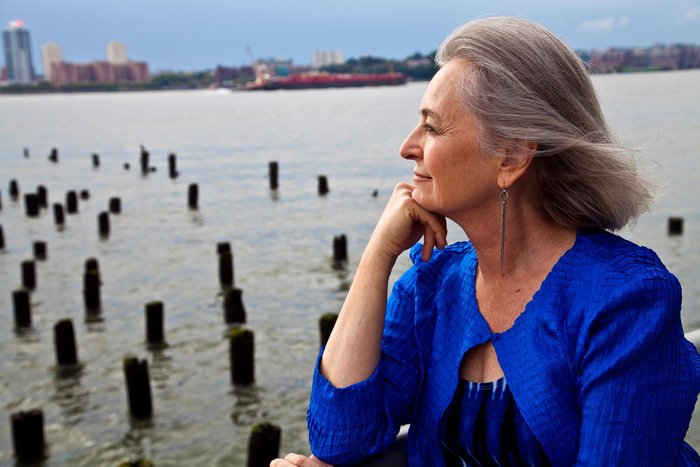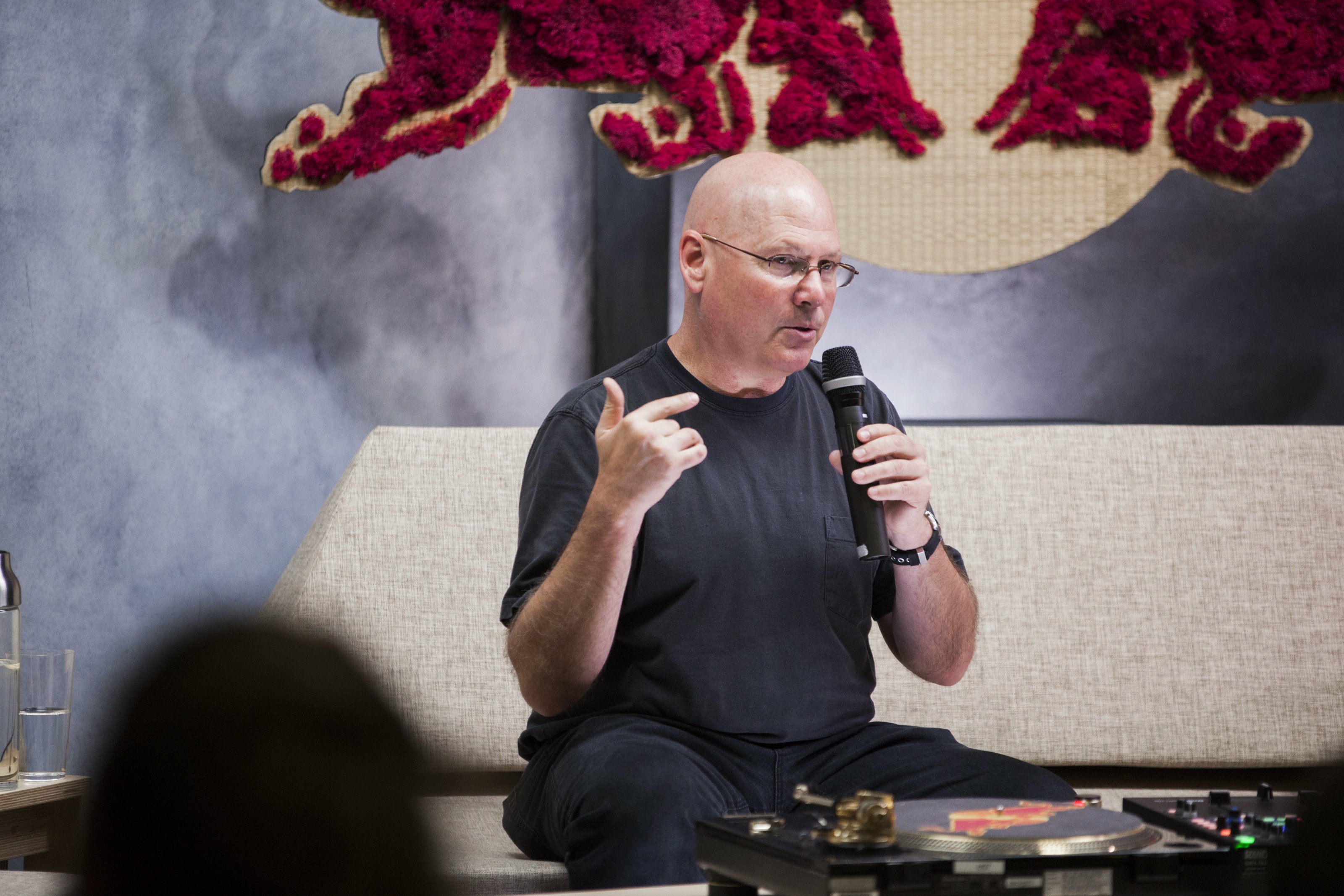Colleen Breathes Strange, New Life into Ancient Instrumentation
The French composer and multi-instrumentalist examines the organic elements at the core of her music’s loopy ambience

Cécile Schott started the Colleen project in 2001, spurred on by some music production software that a friend had given her. As such, much of the French artist’s early output was sample based – much of her first album, 2003’s Everyone Alive Wants Answers, consisted of sounds lifted from Schott’s record collection and the Paris Mediatheque. The LP proved to be a hit but once the time came to tour, Schott quickly realized that she wanted a more live experience, and replicated sounds from the album using acoustic instruments played through loop pedals.
This approach has shaped much of her subsequent work, even as she’s experimented with unusual instrumentation, tackled conceptual projects, dabbled with dub and reggae sounds, added her own vocals to the mix and relocated from Paris to San Sebastian. In 2015, Schott linked up with the storied Thrill Jockey label for her Captain of None album, and although her music is still often tagged as ambient, it’s also rather organic, which perhaps explains its unwavering appeal. In this excerpt from her Fireside Chat on RBMA Radio, Hanna Bächer speaks to Colleen about some of the instruments that have crossed her path.
CELLO
I’ve always been really attracted to string instruments, but as a non-classically trained person I thought that the cello was going to be out of my territory forever. Then, one day, I went to one of these big music shops in Paris. They had a three-quarter sized cello on sale. It was, like, 60 percent [off] or something crazy like that – only 200€. I thought, “This is a sign of destiny. I need to pick up this instrument. It’s so cheap, I can’t believe it.” I got it, but I didn’t realize that it was, actually, a really bad instrument. It wasn’t even made of real wood – it was made of plywood – but the important thing was that I tried to play it and, little by little, that gave me the confidence to buy a real cello. I took a couple of lessons and I developed a limited style of playing that was enough for my own purposes.
The cello ended up being featured quite prominently on The Golden Morning Breaks, as well as chimes and the ukulele. The album featured mostly pretty cheap instruments, I would say, but there is an amazing instrument on it that is not cheap at all. You can’t even find it, actually. It’s called a glass harmonicon and I think it’s from the 18th or 19th century. It’s like a glockenspiel, but it’s made of glass instead of metal and has this amazingly delicate sound. I used that on the track “The Heart Harmonicon.” I’ve always been attracted to acoustic sounds that can end up sounding electronic or a bit strange.
VIOLA
I was 16-years-old when I saw a French film on TV called Tous les Matins du Monde, by Alain Corneau – it stars Gérard Depardieu, so we’re not talking about an arthouse film – and I stopped in my tracks when I heard the sound of the viola. I wasn’t familiar with baroque music at the time, but there was something about the instrument that grabbed me. People say that the viola sounds like the human voice. There’s something earthy about it. I daydreamed about it but, again, I had no classical education and no money, so I thought that it couldn’t happen.
Much later on, once I’d started playing the cello, there was a point when I thought, “What’s preventing me from playing the viola, really?” I’d proven to myself that even though I was never going to be “a real cello player,” I was able to learn it enough to do something that I was more or less satisfied with. One day, I went to buy some cello strings and there was a secondhand viola in the store. I thought, “Okay, these things really do exist.”
Now, the viola da gamba is probably a more popular instrument, but it’s still rare. You really need to want one in order to get one. I got a bass viola da gamba in 2006 and took some lessons – it’s the only instrument that I’ve actually tried to learn “properly” – and I recorded Les Ondes Silencieuses in the winter of 2006. Les Ondes Silencieuses was a hard, painful album to make because I was striving for something that I saw as… authentic, maybe? I was getting away from sampling and using lots of effects and, if you do that, you need to be able to play your instrument and record it well. I felt that I’d reached my limitations at that point, but thankfully I got the help of the mastering engineer who had mastered my previous records. He’s also a recording engineer. He recorded part of the album and helped me through that process, but it wasn’t easy.
Maybe a year afterwards, I felt disenchanted with a lot of the music business. I started to slow down on playing live because I was feeling exhausted. I decided to buy a treble viola da gamba because, again, I went to have another instrument repaired and he had a treble viola in the store. I tried it and thought, “Wow, this really sounds different and it’s so small and light. This is my dream instrument.” The bass viola is amazing, but it’s a big instrument and traveling with it and all my other instruments is just not easy.
I got a treble viola made for me, but I got it right at the point where I had to stop making music for about a year because I’d really lost my inspiration. I had always promised myself I wouldn’t make a record or play live if my heart wasn’t in it. It took another couple of years for me to take it out of its case and see what I could do with it. That became part of The Weighing of the Heart – my comeback album, if I can call it that – and then it became the main instrument on Captain of None.
MELODICA
The melodica was one of the first instruments that I bought when I started playing live shows, in around 2005. I had a song that I really liked and not very interestingly called “The Melodica Song,” which you can hear on my Mort Aux Vaches live recording. I’m not sure why, but it didn’t end up on an album. I still like it very much. My aim was to take the melodica out of the territory of being a children’s instrument. Of course, Augustus Pablo’s use of the melodica has given it its prestige, but apart from him the melodica is mostly regarded as a kind of funny thing. When I was making Captain of None, I had time for another song on the album. I had a bassline that I was happy with, but nothing to go with it. I though, “Well, I’ve been so into that music and I love Augustus Pablo, why don’t I give it a try?”

